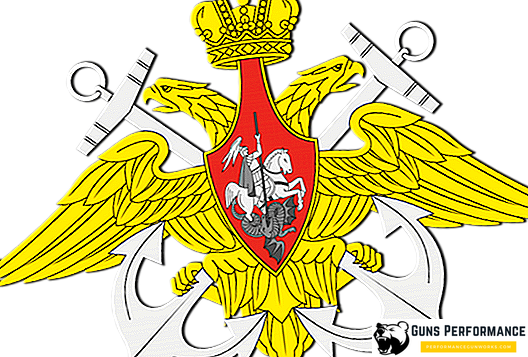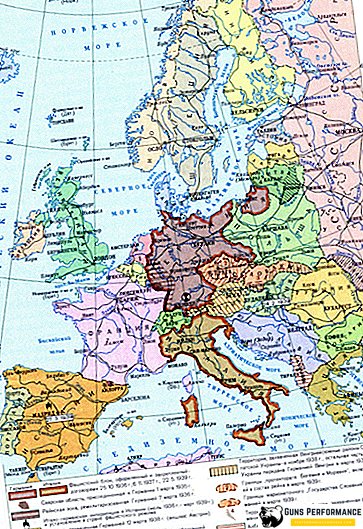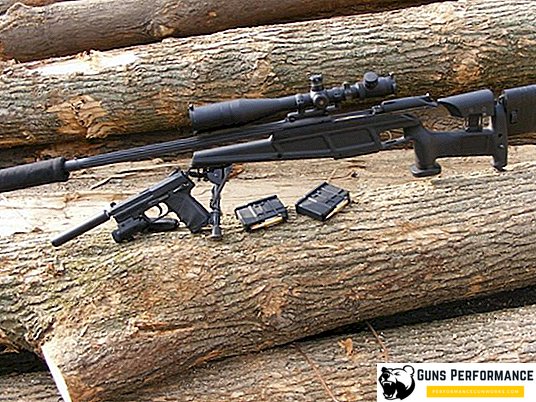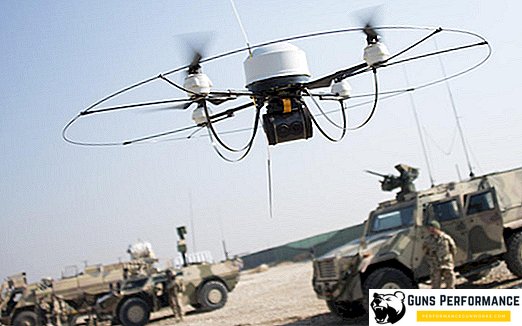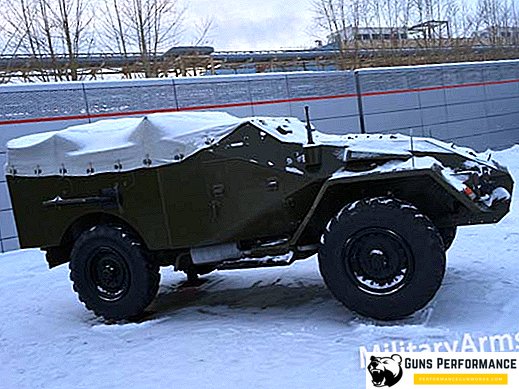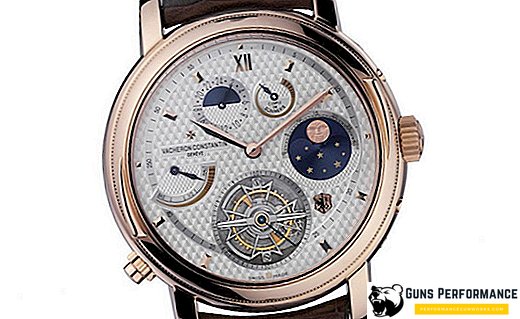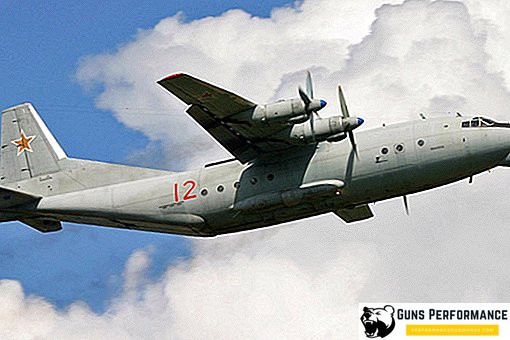The Lewis machine gun is a legendary English light machine gun that took part in both world wars. This is one of the most recognizable weapons of the past century. The Lewis machine gun managed to take part in both the Russian revolution and the Civil War. "Lewis" can be called the most successful machine gun of its period.
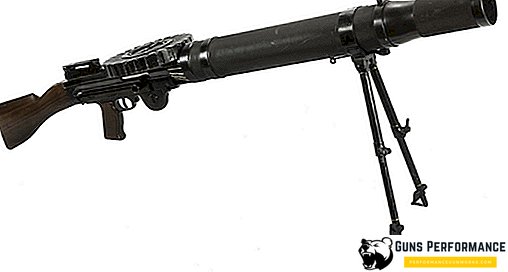
The Lewis machine gun had the original design and really high combat characteristics, which allowed the machine gun to remain in service for so long. A distinctive feature of the Lewis machine gun is the shape of the barrel casing, which can unmistakably recognize this weapon.
History of creation
The Lewis machine gun was developed by Samuel Mac Maple in the United States in 1911. This weapon was developed by American Army Col. Isaac Newton Lewis. Initially, he wanted to make this machine gun easel and equip it with water cooling, but then stopped at the original idea of forced air cooling of the barrel. It should be noted that no one after Lewis used a similar scheme in the design of the weapon.
Lewis offered his machine gun for armament of the American army, several samples of the weapon even passed tests, but the US military leadership considered this machine gun unpromising and not worthy of attention. After this setback, Lewis retired and moved overseas, first to Belgium and then to the UK. It was the Belgians who first became interested in the new machine gun and in 1913 took it into service. The release of the Lewis light machine gun was set up at the BSA plants (England).
In 1914, the machine gun was baptized in combat - a world war began in Europe. After it began, the demand for the Lewis machine gun grew at an unprecedented pace, the BSA expanded production, but despite this, it could not fulfill all orders. Therefore, some orders were placed in the United States.

German infantrymen called the Lewis machine gun a “rattlesnake” for the distinctive sound of its work and gladly took it as a trophy. Then "Lewes" were altered under the Mauzer cartridge and successfully used in battle. Especially loved the machine gun Lewis German assault troops.
This machine gun came to Russia as far back as 1913: several samples were purchased for testing at the Officer Rifle School. However, the Russian military "Lewis" did not like, especially a lot of complaints were on the short service life of the machine gun barrel.
However, this machine gun was not forgotten in Russia, they became especially necessary during the war. In 1915, the British government gave Russia the right to all "Lewes", made by British orders in the United States. Deliveries began as early as next year. Also in Russia were supplied machine guns Lewis, made in England under the English cartridge .303. American machine guns were made under the Mosin patron 7.62 mm.
Lewis light machine guns were actively used in Russian aviation. An additional handle, giltsosbornik and flame arrester were installed on it. Sometimes they removed the covers: the oncoming air flow cooled the trunk sufficiently.

Before the start of the revolutionary events, Russia managed to deliver more than 10 thousand units of these weapons, so they were actively used during the Civil War. For example, the "Lewis" was armed with personal guards of the legendary Makhno.
"Lewes" in rather large quantities were stored in the Soviet military warehouses. After the start of the war, they were remembered and sent to the front. There is a famous photograph of Red Army soldiers armed with these machine guns marching on the famous parade on November 7, 1941.
A similar situation was with the British. In the late 30s, the British army began to change the "Lewis" to the more modern "Bren". During the flight from France was lost a huge number of small arms, so the “Lewis” had to get back into operation. The Germans also used these machine guns, captured in the form of trophies. Basically, they were armed with parts of the Volkssturm.
The last big conflict for this machine gun was the Korean War.

The machine gun and the principle of its work
The work of automatic machine gun based on the removal of a portion of the powder gases from the barrel. The rate of work of automation (rate of fire) is regulated by a crane on the gas chamber. The gas piston moved back, turned on a coil spring (as in an ordinary watch) and turned the magazine through a special mechanism. The barrel was locked by turning the bolt, the stops of which were in the grooves of the receiver. The trigger mechanism allowed only automatic fire.
The Lewis machine gun consisted of the following components: a barrel with a casing and a radiator, a receiver, a bolt and a bolt, a store of a special design, a trigger mechanism with a handle, a recoil-fighting spring.
The spiral spring is also a unique feature of this machine gun: never after has it been used in a weapon. To tighten the spring in the kit to the machine gun included a small special key.

Spring unwound and filed a cartridge in the chamber, after which a shot was made.
The main feature of the Lewis machine gun was its casing, which strongly supported the dimensions of the barrel of the weapon. When fired, the powder gases created a region of reduced pressure in the back of the casing, which pulled cold air through it, which cooled the ribbed barrel. Folded bipod attached to the casing.
No less interesting and the design of the store of this machine gun. It had a disk shape, the cartridges in it were arranged in several rows: in two or four. Unlike most existing stores, it did not contain a supply spring. The cartridges were fed using a special mechanism, which was activated by a protrusion on the gate. Such a store can be considered as one of the first attempts to abandon the tape supply.

The fuse was installed on the receiver.
Forty-seven rounds were shot in just six seconds, so the machine-gunners were taught to release the finger from the trigger at the count of "three." Sights consisted of a pillar and front sight, located at the end of the casing. The rear sight had two positions: for 600 yards (about 500 meters) and the second, intended for firing at longer distances. Anti-aircraft "Lewis" equipped with special sights, made of wire.
The Belgians, who first adopted this machine gun, called the "Lewis" a "machine gun with which to run." And it really was. Despite its impressive dimensions, the machine gun weighed only twelve kilograms, which was very little. Most of the samples of such weapons of that time were water cooled, equipped with machine tools and weighed more than thirty kilograms. It is clear that such a machine gun could hardly be used in offensive operations.

Performance characteristics
| Manufacturer | Birmingham Small Arms |
| Cartridge | .303 British |
| Caliber: | 7.7 mm |
| Unloaded weight | 13 kg |
| Length | 1280 mm |
| Barrel length | 670 mm |
| Rate of fire | 500-600 shots / min |
| Effective range | 800 m |
| Sighting range | 3200 m |
| Initial bullet speed | 740 m / s |
| Type of ammunition | Detachable store |
| Amount of cartridges | 47, 97 |
| Years of production | 1913-1942 |


